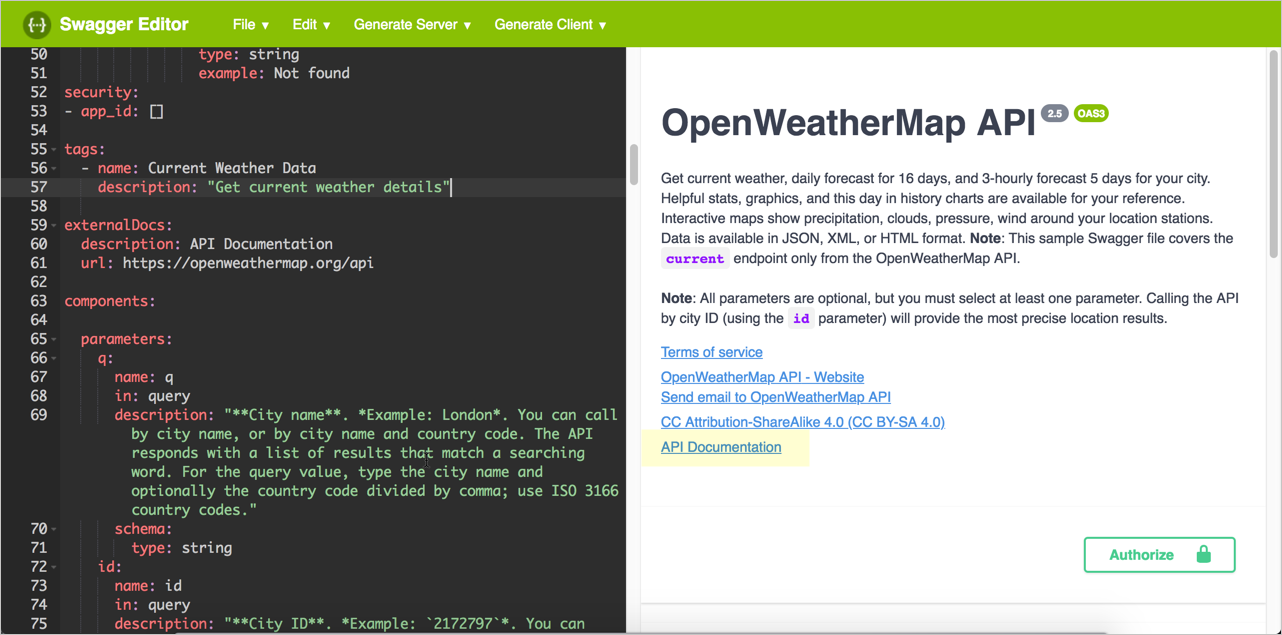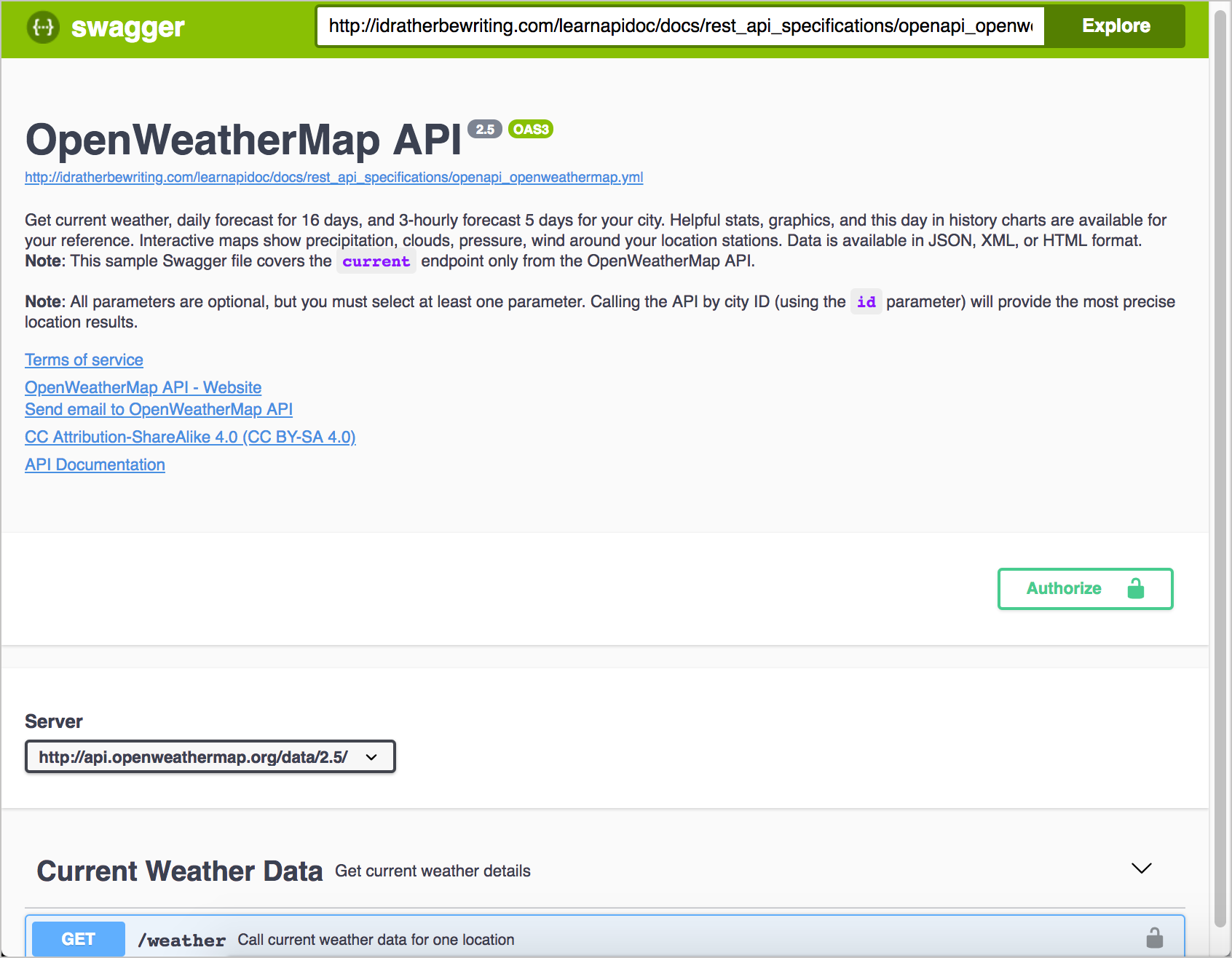Step 8: The externalDocs object (OpenAPI tutorial)
The externalDocs object lets you link to external documentation. You can also provide links to external docs in the paths object.
Example externalDocs object
Here’s an example of an externalDocs object:
externalDocs:
description: API Documentation
url: https://openweathermap.org/api
Note that this documentation should relate to the API as a whole. To link a specific parameter to more documentation, you can add an externalDocs object to the operation object, as noted in Operation objects section in Step 4: The paths object.
If you get stuck, see the sample OpenAPI spec here for the fully working sample. This will help you spot and troubleshoot indentation or other errors.
View the Appearance in Swagger UI
Add the above code to the root level of your OpenAPI document in Swagger UI.
When you do, in the Swagger UI, a link appears after the API description along with other info about the API:

At this point, you can probably anticipate some challenges with integrating Swagger UI with the rest of your documentation. It seems that you will likely have two outputs and a semi-fragmented user experience. The externalDocs object at least gives you a predictable place to link back to your other conceptual topics. See Integrating Swagger UI with the rest of your docs for more information on integration strategies.
Seeing the finished result
Now that we’ve completed all the steps in the tutorial, we’re finished building our OpenAPI specification document.
You can see the complete specification document here: https://idratherbewriting.com/learnapidoc/docs/rest_api_specifications/openapi_openweathermap.yml.
Here’s the specification document rendered by Swagger UI:
Try executing a request in the version above and look at the result. In the result, locate the temp value in the main object. Then take a break by going outside and evaluate whether the temperature outside matches the response.
You can insert any valid path to an OpenAPI specification document in the “Explore” box in Swagger UI (assuming the version of Swagger UI supports your OpenAPI version), and it will display the API documentation. For example, you could insert https://petstore.swagger.io/v2/swagger.json (then click Explore) and it would show the Petstore API.
49/145 pages complete. Only 96 more pages to go.

